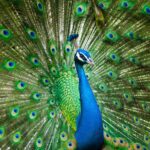The owl has long been a symbol of wisdom and introspection, with its penetrating gaze suggesting that it knows more than we do. But what is the true meaning behind this mysterious bird? Is there an underlying message or understanding that can be found by delving deeper into the symbolic nature of the owl?
This article explores the hidden depths of the owl’s symbolism – from its use as a guardian in mythology to its contemporary associations with calmness and inner knowledge.
We will examine how different cultures worldwide have interpreted the owl over time and uncover some surprising facts about this misunderstood creature. We’ll also look at why people are drawn to owls today and discover how they can help us gain greater insight into ourselves and our place in the world. Through exploring these ideas, we hope to provide readers with fascinating information and powerful insights that could lead them toward personal growth.
So if you’re looking for answers or want to understand one of nature’s most captivating creatures better, read on as we delve into ‘The Meaning Behind The Owl: Wisdom & Introspection’!
The owl has been a symbol of wisdom and introspection throughout the ages. From ancient Greece to Native American cultures, this mysterious bird has inspired reverence among those who seek greater understanding. As we gaze upon its nocturnal eyes, it almost seems they are peering deep into our souls, seeking knowledge.
In Greek mythology, owls were associated with the goddess Athena – she was often depicted with an owl perched on her shoulder. This connection between owls and wisdom is thought to have originated partly due to their ability to see in darkness – something that would have fascinated Greeks living thousands of years ago. They believed that because owls could see more clearly at night than humans, they had access to secrets unknown to humanity.
Owls also hold spiritual significance for many Native American tribes. Often viewed as messengers between worlds and keepers of sacred knowledge, these birds represent power and insight in many tribal stories.
To some tribes, seeing an owl can signal a coming change or a life-altering event; their presence is seen as a blessing from nature’s spirit guides. In short, owls offer us the opportunity to peer into our physical world and beyond – allowing us glimpses of what lies beneath the surface and helping us gain deeper insights into ourselves and the universe around us.
Moving away from the ancient history and mythology of owls, let’s explore their cultural significance. Over the ages, owls have been adopted as symbols in various cultures to represent multiple meanings – often wisdom and introspection.
In Greek myth, Athena was an owl goddess symbolizing intelligence, creative thought, and knowledge. The Romans saw owls as a sign of protection, while some Native American tribes believed they represented strength and intuition.
Today, many people still recognize the symbolic presence of an owl in our lives – whether it be through literature or film. From Harry Potter’s beloved snowy owl Hedwig to Disney’s wise old Owl in Winnie the Pooh, these characters emphasize themes such as learning and insightfulness.
Similarly, we can find references to owls in popular songs by artists like Taylor Swift and even in clothing designs from brands like Supreme and Louis Vuitton that illustrate its timeless appeal across generations.
The owl is more than just a nocturnal bird; it has become an emblem for recognizing our inner wisdom when faced with difficult decisions or life challenges – reminding us that our best guide lies within ourselves. Whether through stories or fashion trends, this powerful creature continues to captivate us with its mysterious allure – inspiring us to seek greater meaning in life.
The physical characteristics of the owl make it a highly distinctive bird that can easily be recognized in its natural environment. Its large, round eyes are usually quite noticeable, as they tend to stand out on either side of its head. The face is often framed by two tufts or “horns” that give owls a unique look and distinguish them from other birds.
They also possess long legs and powerful talons, which help them capture prey during their nocturnal hunts. Owls have soft feathers, allowing them to fly soundlessly and surprise their game before attacking.
Owls come in many different shapes and sizes; some species, such as the Eurasian Eagle-owl, are amongst the largest living species of an owl, while others, such as Elf Owls, may only grow up to six inches tall! Additionally, some owls boast beautiful coloration with various hues, including orange, yellow, brown, black, and white. Many species have distinct markings making each individual virtually one-of-a-kind.
In summary, the physical attributes of an owl provide insight into why these creatures evoke feelings of wisdom and introspection – their expressive eyes combined with silent flight enable them to navigate through darkness unseen while searching for answers within themselves and nature around them.
Moving on from physical characteristics, the owl’s symbolism is equally intriguing. It has been revered in many cultures throughout history and across continents for its wisdom and introspection. In Greek mythology, Athena was known to be accompanied by an owl which symbolized her intelligence and foresight. Similarly, the owl was sacred in Ancient Egypt; it represented all-seeing knowledge that could be used for good or evil, depending on its application.
In some Native American traditions, owls were considered messengers between this world and the spirit world. Their mystical sounds at night are believed to help bridge those two realms together. Owls have also become a representation of inner strength through their ability to adapt to various environments and survive alone without any assistance from other animals.
The symbolic nature of these fascinating creatures continues today, with them being seen as protectors during times of peril. Many people believe that if you hear an owl hooting near your home, something terrible will soon happen – but others view it as a sign that you can always find guidance when faced with difficult situations.
No matter what interpretation one may take away from seeing an owl, its wise eyes remain a constant reminder of our potential for understanding life’s mysteries.

The owl has a deep spiritual connection to many cultures throughout history. It is seen as a messenger between the physical and spiritual worlds – an embodiment of knowledge, wisdom, and introspection. Despite its nocturnal nature, it also symbolizes light in the darkness. The irony would suggest that one can find illumination despite being surrounded by shadows; however, this may be more symbolic than literal in specific contexts.
The owl’s association with death and prophecy made it a frequent feature in ancient mythology, where it was typically represented as a spirit guide or protector. This creature has been known to represent both good and bad omens, depending on the context. Sometimes, it is associated with dark magic; at other times, it stands for luck and protection from evil forces. The two sides are often intertwined in literature, furthering our understanding of how complex this bird’s symbolism is.
Owls have long been admired for their intelligence, independence, and sense of mystery – qualities humans strive to emulate when seeking clarity within themselves. Those who seek more profound insight into the unknown realms of life through meditation or contemplation can use the owl to help them along their journey toward higher consciousness. Its presence reminds us of our power if only we take time to reflect upon its teachings: That even amidst confusion, there lies clarity beyond what meets the eye.
Connecting with the owl can be a powerful and meaningful experience. The first step is to open up your senses and observe them in their natural environment. Owls are nocturnal animals, so you must stay late or get up early to see them. It would be best if you also took some time to learn about owls’ behaviors, diet, and habitat to recognize when one appears.
Once you have identified an owl nearby, begin by sitting still for several minutes as you look at it intently from a distance. Take note of its physical features – wingspan, eye color, feathers – while focusing on your breath and allowing yourself to relax into the moment. If possible, try humming low tones or playing music softly; this may help attract their attention since they often respond positively to sound vibrations.
In addition to observing them physically, make sure to connect on an emotional level too. During your time together, focus on cultivating feelings like peace and self-reflection as well as wisdom and introspection – values that symbolize the meaning behind the owl’s presence. With patience and practice, connecting with these majestic creatures can bring forth insightful moments in life that prove invaluable down the road.
The owl has been a symbol of wisdom, knowledge, and introspection for centuries. The combination of its cultural significance, symbolic representation, and spiritual connection makes it one of the most potent symbols in all cultures around the world.
Understanding these aspects allows us to connect with the owl more deeply. By studying its physical characteristics and exploring its mythology, we can gain insight into our own lives and discover hidden depths within ourselves. We must also take time out of our everyday busyness to reflect upon life’s more significant questions – something the owl encourages us to do.
I hope this article has provided insight into why owls are revered as symbols of wisdom and introspection. Their power lies in their mysterious beauty and what they represent – an animal whose nocturnal habits give deep meaning to those who observe them.







